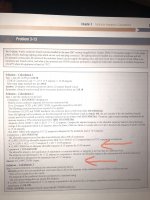Cindysparky
Member
- Location
- Milwaukee
- Occupation
- Electrician
I’m teaching from this book. In this particular chapter, the book talks about choosing conductors with two things happening: continuous load, and adjustment factors of temperature and current carrying conductors. Many people in the class are very knowledgeable electricians. They are a smart bunch. Two of them had a fit that the book was wrong on this topic. They said that the conductors should be sized up from 12 gauge to 10 gauge.
I did mention that the book warns that oversizing conductors (per code requirement ) is a common misconception. That the true sizing the largest of the two observations: continuous load vs heat/current carrying adjustment.
I told them that I would take the time to pose this question to the forum and get some expert advice.
I think the book is correct. What do you think???

I did mention that the book warns that oversizing conductors (per code requirement ) is a common misconception. That the true sizing the largest of the two observations: continuous load vs heat/current carrying adjustment.
I told them that I would take the time to pose this question to the forum and get some expert advice.
I think the book is correct. What do you think???


